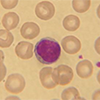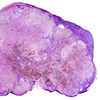Cancer Antigen 19-9 (CA 19-9)
Specimen Volume
1mL (~250uL sample)Turnaround Time
24 hoursSample Processing In Laboratory
No special requirementsSample Stability
30 days at 2-8°CGeneral Information
Carbohydrate Antigen (CA) 19-9 is a sialylated form of the Lewis blood group antigen. In serum, it exists as a mucin, a high molecular weight (greater than 1 million Daltons) glycoprotein complex with a half-life of approximately 1 day. CA 19-9 is a component of many mucosal cell membranes and their secretory products, but its biological role is unknown. CA 19-9 is produced in the foetal epithelium of the stomach, small and large intestine, liver and pancreas. In the adult, CA 19-9 is synthesised in trace amounts in the pancreas, liver, gallbladder, stomach, colon and lung. Individuals with a Lewis antigen negative blood grouping are unable to synthesise CA 19-9 (approximately 10% of the population).
CA 19-9 is used mainly as a marker of pancreatic carcinoma. Early clinical symptoms of pancreatic carcinoma are minimal and the tumour is usually only diagnosed at a late stage when the prognosis is poor.Measurement of CA 19-9 can aid in diagnosis where pancreatic cancer is suspected, in conjunction with imaging techniques. CA 19-9 measurement can be used for surveillance and monitoring of treatment for pancreatic carcinoma.
Elevated concentrations of CA 19-9 are also found in the following malignancies: gastric cancer, biliary cancers, hepatocellular carcinomas, oesophageal cancers and in miscellaneous non-gastrointestinal cancers.
Serum CA 19-9 concentrations may be elevated in the following benign conditions: hepatitis, hepatic cirrhosis, biliary disease, cystic fibrosis, pancreatitis, diabetes mellitus and rheumatic disease. CA 19-9 is removed from circulation by the liver, so chronic liver disease, particularly with ascites, may cause elevated serum concentrations. Elevated serum CA 19-9 concentrations are not absolute evidence of the presence of malignant disease, and should be used in conjunction with other diagnostic and clinical information
Patient Preparation
No special patient requirements. Serum assay only , collect blood into yellow/red top vacutainer.
Reference Range
<37 KU/L
Source of Reference Range
In-house validationSpecifications
- EQA Status: IMMQAS
- EQAS Scheme: Yes








